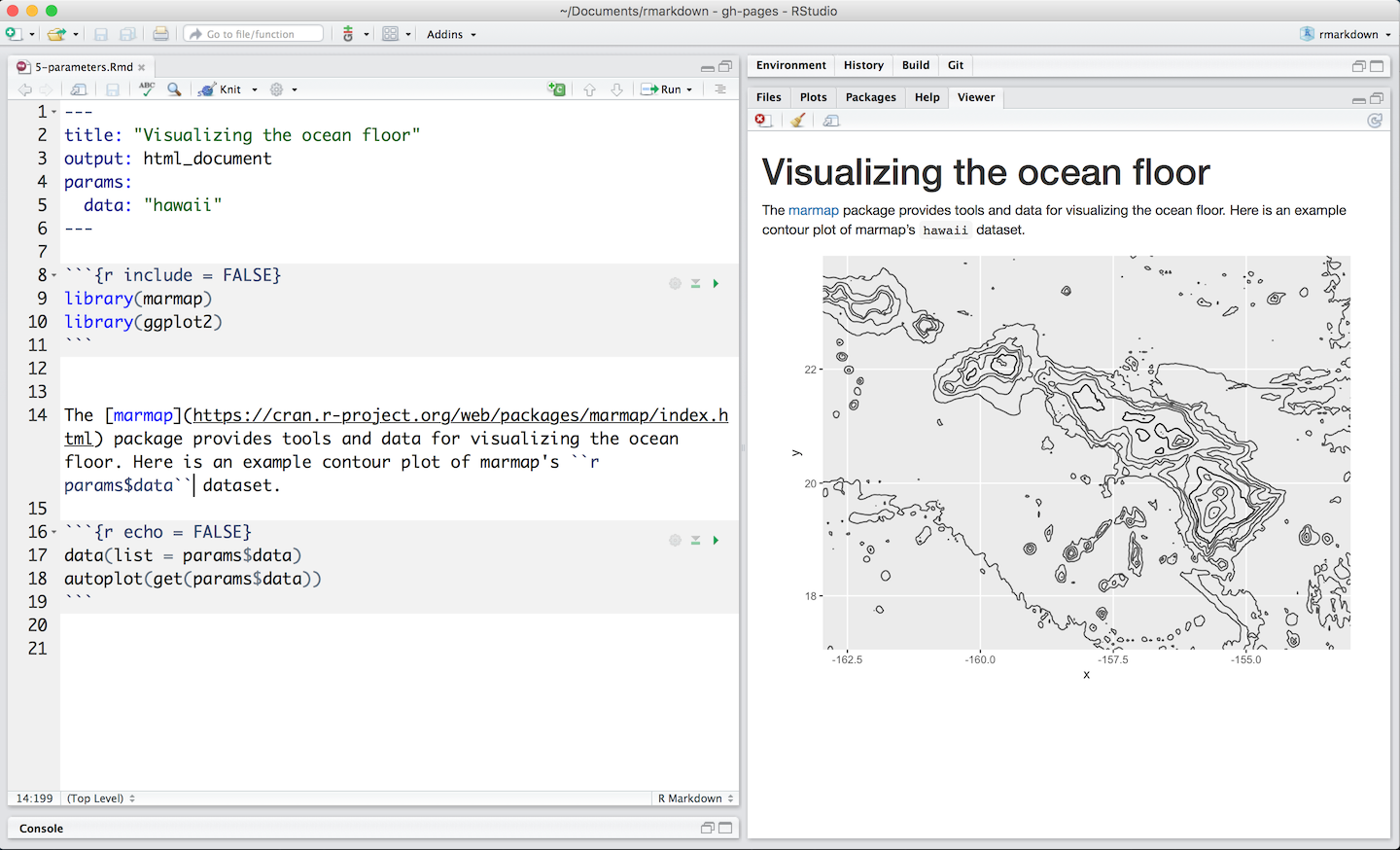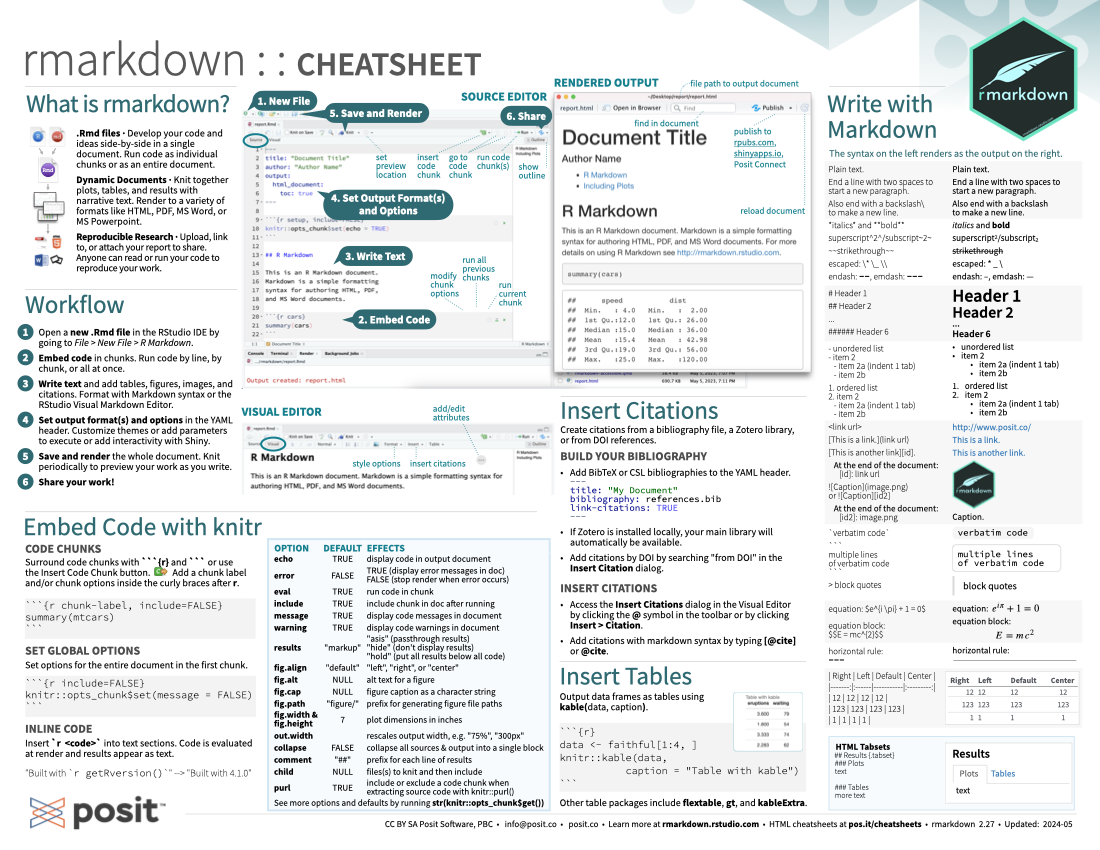The hardware and bandwidth for this mirror is donated by METANET, the Webhosting and Full Service-Cloud Provider.
If you wish to report a bug, or if you are interested in having us mirror your free-software or open-source project, please feel free to contact us at mirror[@]metanet.ch.
Learn R Markdown
Overview

If you are new to using R Markdown, we encourage you to start with a
systematic overview, rather than diving right in to reading
documentation pages. The best place to start is the “Communication”
section in the book “R for Data Science” (R4DS for short), an
O’Reilly book written by Hadley Wickham and Garrett Grolemund.
Here are the chapters that cover R Markdown, as summarized by Hadley
and Garrett:
In R
Markdown, you will learn about R Markdown, a tool for integrating
prose, code, and results. You can use R Markdown in notebook mode for
analyst-to-analyst communication, and in report mode for
analyst-to-decision-maker communication. Thanks to the power of R
Markdown formats, you can even use the same document for both
purposes.
In R
Markdown formats, you’ll learn a little about the many other
varieties of outputs you can produce using R Markdown, including
dashboards, websites, and books.
We’ll finish up with R Markdown
workflow, where you’ll learn about the “analysis notebook” and how
to systematically record your successes and failures so that you can
learn from them.

Tutorials
The R Markdown
website offers a series of tutorials you can follow to see what is
possible with R Markdown.
These tutorials offer accompanying RStudio Cloud lessons you can use
right away in your browser.
You can also access links to all these tutorials in the “Get
Started” section from the top of this page.
User Guide
Written by the authors of the rmarkdown package, R Markdown: The Definitive
Guide provides a comprehensive user guide to the complete R Markdown
ecosystem for authoring documents. The book is published by Chapman
& Hall/CRC, and you can read it online for free.

The book is structured into four parts:
Part I
introduces how to install the relevant packages, and provides an
overview of R Markdown, including the possible output formats, the
Markdown syntax, the R code chunk syntax, and how to use other languages
in R Markdown.
Part II
is the detailed documentation of built-in output formats in the
rmarkdown package, including document formats and presentation formats.
These output formats are “built-in” because you do not need any other R
packages other than rmarkdown to use them.
Part III
documents several R Markdown extension packages that enable you to build
different applications or generate output documents with different
styles. These output formats are “extensions” because you will need to
install R packages, in addition to rmarkdown, to use them.
Part
IV covers advanced topics about R Markdown.
Going further with examples

R Markdown
Cookbook provides a range of examples on how to extend the
functionality of your R Markdown documents. As a cookbook, this guide is
recommended to new and intermediate R Markdown users who desire to
enhance the efficiency of using R Markdown and also explore the power of
R Markdown. The book is published by Chapman & Hall/CRC, and you can
read it online for free.
This cookbook is not a full technical reference for R Markdown but
aims to supplement, instead of replace, the existing literature. The
book is thus organized by topics with example as self-contained as
possible so that readers can read this book with specific tasks in mind
to do with R Markdown.
The topics are the following
Cheatsheets

The R
Markdown cheatsheet is a one page (two-sided) reference guide you
can download as a quick reference while you work.
You can access it from within the RStudio IDE:
- Help > Cheatsheets >
R Markdown Cheat Sheet
These binaries (installable software) and packages are in development.
They may not be fully stable and should be used with caution. We make no claims about them.




